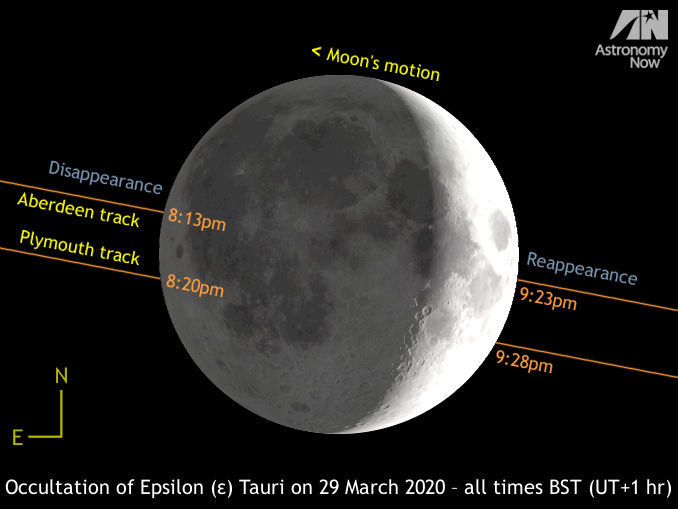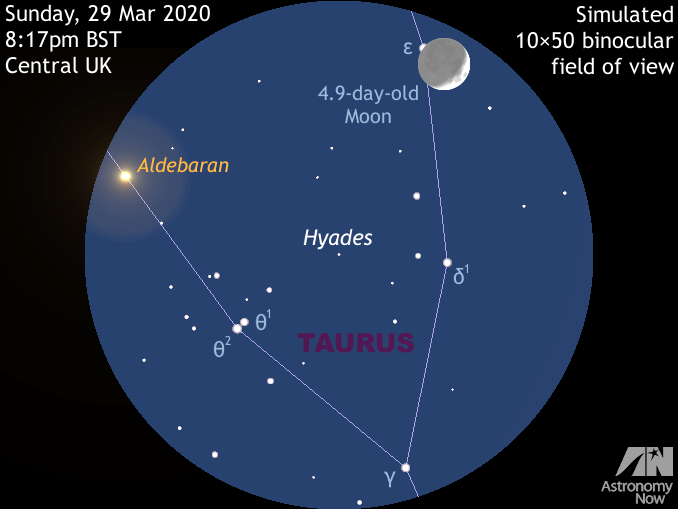Star Epsilon (ε) Tauri plays hide and seek with the crescent Moon on 29 March – Astronomy Now Online

As a gentle reminder for those of us living in the UK, British Summer Time starts at 1:00am GMT on Sunday, 29 March 2020 when the clocks go forward one hour. On that date, sunset for an observer in the heart of the UK will be 7:41pm BST. While keen observers will grumble at the prospect of waiting 60 minutes longer for darkness to fall, some solace may be found in viewing an interesting lunar occultation occurring on the first night of daylight savings time.
Epsilon (ε) Tauri is a magnitude +3.5 naked-eye star that has the proper name Ain. It is easily found almost 3.2 degrees to the northwest of first-magnitude Aldebaran, the brightest star in the constellation of Taurus, amid the stars of the loose open cluster known as the Hyades. Aldebaran, Ain and the Hyades conveniently fit in the same binocular field of view at magnifications of 10× or less. Physically, ε Tauri is an orange giant star some 147 light-years distant attended by a super-Jupiter exoplanet called Epsilon Tauri b, formally named Amateru.

As illustrated at the top of this page, observers in the north of Great Britain will see an almost central occultation of Ain on 29 March 2020. As viewed from Aberdeen, the star winks out of sight behind the darkened edge of the advancing Moon close to 8:13½pm and reappears at the bright lunar limb a few seconds after 9:23pm, hence the event’s duration is close to 70 minutes. Some 770 kilometres to the south in Plymouth, ε Tauri is hidden from 8:20¼pm to 9:28⅔pm, while those in Cardiff will see the star’s disappearance at 8:19½pm and reappearance at 9:28⅔pm. Londoners can expect to see an occultation of Ain lasting from 8:22½pm until 9:30¾pm (all times British Summer Time).






